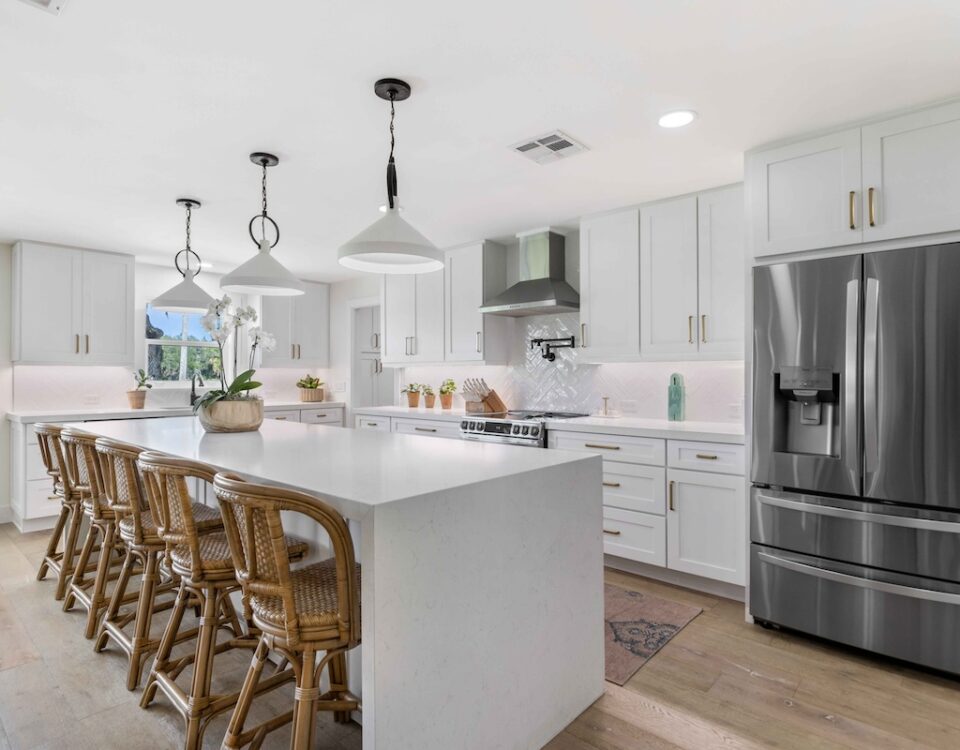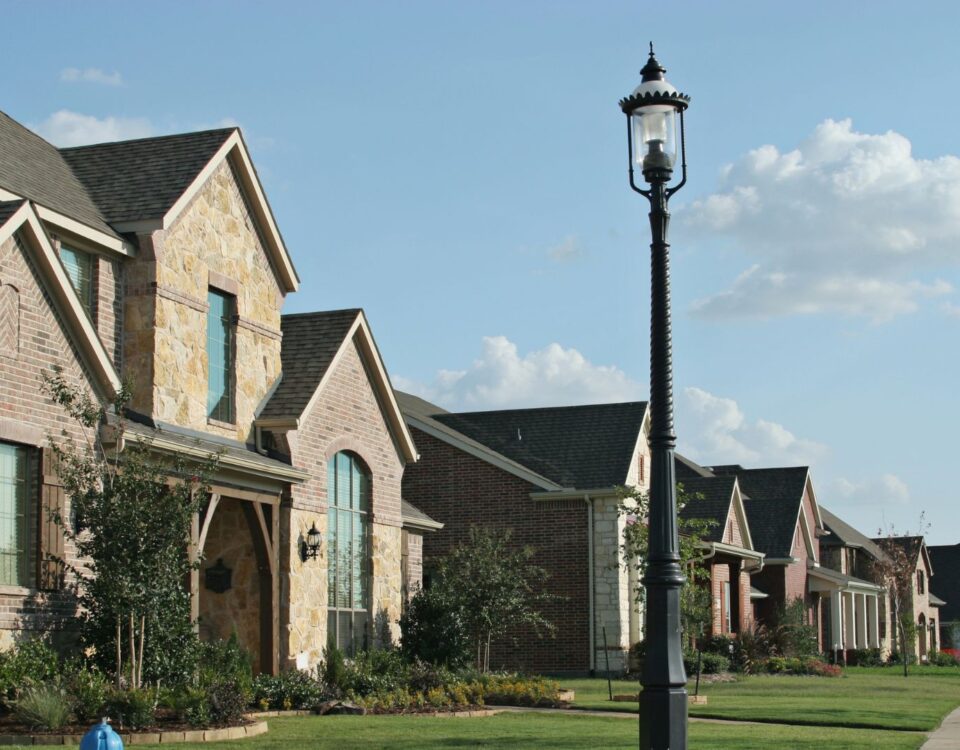
What Are the Latest Trends in Aerial Real Estate Photography?
April 18, 2025
When Is Aerial Real Estate Photography Most Effective for Different Types of Properties?
April 23, 2025Selling a property can be hard without the right visuals. Professional real estate photography services highlight unique architectural features that attract buyers. This blog explains how expert photographers use lighting, angles, and editing to showcase these details.
Keep reading to learn more!
Key Takeaways
- Professional real estate photography highlights architectural details using lighting, angles, and post-processing techniques.
- Natural light during golden hour enhances textures, while artificial light creates dramatic effects for depth and structure.
- Strategic framing draws attention to key elements like arches or staircases, emphasizing symmetry and design balance.
- Wide-angle lenses, low-angle shots, and creative perspectives add depth and dimension to small or large spaces.
- Post-processing refines colors, textures, and sharpness for accurate visuals that captivate potential buyers online.
Capturing Architectural Features with Real Estate Photography
Real estate photography focuses on emphasizing the unique characteristics of a property’s structure. Skilled photographers use precise techniques to bring attention to standout architectural elements.
Highlighting symmetry and design
Highlighting symmetry in architecture draws attention to the balanced and proportional elements of a property. Symmetry creates visual harmony, making structures appear more appealing and organized.
Using single-point perspective in photography emphasizes symmetrical lines, such as columns or doorways, creating a captivating focal point for viewers. Leading lines draw attention to specific features, like grand staircases or expansive hallways.
Strategic framing emphasizes genuine architectural elements without altering their design. Natural frames, such as windows or arches, highlight intricate details while maintaining focus on key areas.
“Symmetry brings order to chaos and beauty to balance,” said renowned architect I.M. Pei. These techniques ensure that every detail is showcased effectively for prospective buyers through high-quality imagery.
Showcasing unique textures and materials
Photography for real estate highlights unique textures and materials through precise lighting and angles. Side lighting brings out surface details in stone, wood, or fabric, creating depth in the images.
Backlighting adds dramatic silhouettes to architectural elements like glass panels or textured walls.
High-quality texture photography reveals intricate finishes on flooring, countertops, or exterior facades. Post-processing sharpens these textures for a clean and polished look. These techniques emphasize the craftsmanship of interior design while differentiating properties in real estate visual marketing campaigns.
Lighting Techniques for Architectural Details
Lighting plays a crucial role in emphasizing a property’s architectural details. Properly executed lighting highlights textures, patterns, and structural elements effectively.
Using natural light to enhance structures
Golden hour provides soft, diffused light that highlights architectural details. This time frame enhances textures and materials, giving clarity to intricate designs. Sunlight and shadows create depth, adding contrast to surfaces like wood or stone.
Diffused natural light minimizes harsh glares while balancing colors for accurate material portrayal. It amplifies texture enhancement by revealing subtle patterns on facades or interiors.
“Natural light breathes life into structures,” say many real estate photography and videography services.
Employing artificial lighting for dramatic effects
Artificial lighting highlights architectural details by amplifying textures and enhancing intricate designs. Strategic lighting techniques, such as side lighting and backlighting, create dramatic effects that emphasize depth and structure.
Reflectors eliminate shadows in interior illumination while brightening dark areas to reveal hidden features.
Lighting setups can transform ordinary spaces into visually compelling scenes. Using artificial light allows photographers to control brightness and focus on key elements of the design.
This approach ensures balanced exposure, even in challenging conditions or dimly lit spaces.
Composition Strategies for Showcasing Architecture
Framing architectural details effectively can draw attention to a property’s standout features. Choosing the right angles enhances depth and emphasizes design elements.
Framing key architectural elements
Highlighting architectural elements is essential in a real estate photography service. Strategic composition ensures buildings stand out while emphasizing their true design.
- Position key architectural elements as the focal point to draw attention to unique details like arches or intricate carvings.
- Use leading lines, such as walkways or railings, to guide the viewer’s eye toward specific features of the structure.
- Align symmetry within the frame to highlight balanced designs and emphasize harmony in architecture.
- Employ natural frames, like windows or doorways, to focus on significant aspects of the building’s interior or exterior.
- Experiment with angles to capture depth and dimension while ensuring accurate representation of structural design.
- Center attention on textures and materials by framing them against contrasting backgrounds for clarity and emphasis.
Using angles and perspectives to add depth
Angles and perspectives can transform architectural photography by showcasing depth and dimension. Strategic techniques draw attention to unique features and enhance the visual appeal of properties.
- Capture low-angle shots to emphasize height and make buildings appear imposing. This technique adds grandeur to tall structures.
- Use high-angle views for a complete layout perspective with the luxury real estate photographer. These shots are ideal for highlighting intricate roof designs or expansive grounds.
- Experiment with single-point perspective to focus on specific architectural elements like arches or columns. This creates symmetry and draws the viewer’s eye.
- Incorporate wide-angle lenses to capture more of the space in one frame. They work well for showcasing open layouts or spacious interiors.
- Take distant shots to include the property in its surroundings. This approach helps contextualize its placement in a neighborhood or landscape.
- Frame key elements, such as windows or doorways, using natural lines within the structure itself. Framing directs focus effectively.
- Shoot from unexpected angles, like diagonal or side perspectives, for creative composition. These viewpoints reveal hidden details not often noticed at first glance.
- Adjust positioning by moving closer or farther away from a subject to balance scale and depth perception in images accurately.
- Select filters that enhance light exposure without altering true colors of materials like wood, stone, or glass used in construction.
- Balance composition by aligning structural lines parallel in horizontal or vertical formats when possible for clean aesthetics that resonate clearly with viewers looking at listings online later today!
Post-Processing to Enhance Architectural Details
Post-processing refines the visual appeal of architectural photography by enhancing clarity and details. It emphasizes design elements, ensuring structures appear both accurate and visually captivating.
Balancing colors and textures in editing
Editing tools refine colors, contrast, and sharpness for accurate visuals. HDR imaging software enhances the dynamic range to display light and dark areas effectively. Adjusting color balance ensures materials like wood or stone appear natural in photos.
Accurate material representation highlights unique architectural textures from a luxury real estate photographer near me.
Texture enhancement techniques add depth to flat images. Subtle contrast adjustments emphasize intricate details without over-processing. Correcting tones maintains harmony between structural elements and surrounding spaces.
Retouching surfaces brings clarity while preserving the authenticity of designs highlighted by lighting techniques.
Enhancing intricate details with retouching
Retouching highlights detailed architectural elements frequently overlooked by the camera. By concentrating on specific adjustments, photographers can improve textures and materials to appear more precise.
Minor edits like eliminating distractions produce cleaner images that draw focus to essential aspects of a property.
Harmonizing colors ensures materials, such as brick or wood, reflect their true-to-life tones. Improving edges and patterns through sharpening increases depth and refinement. These adjustments elevate the presentation and prepare images for showcasing composition strategies effectively.
Overcoming Challenges in Architectural Photography
Photographers tackle challenges like uneven lighting or confined spaces with creative solutions. They use advanced tools and techniques to ensure every architectural detail shines in the final images.
Managing difficult lighting conditions
Managing challenging lighting conditions is crucial in architectural commercial real estate photography. Proper techniques ensure key details and textures shine, even in tough situations.
- Use reflectors to direct light into shadowed areas. This helps brighten spots without harshening the scene.
- Employ diffusers to soften harsh sunlight. These tools reduce glare and create balanced lighting for outdoor shots.
- Incorporate artificial light to highlight interiors during overcast days or low-light conditions. LED panels work effectively for this purpose.
- Rely on natural daylight to emphasize textures and structural details like wood grain or brickwork patterns.
- Adjust angles carefully when shadows obstruct features. Move the camera to limit unwanted dark spots.
- Combine multiple exposures in post-processing to balance highlights and shadows for a clean final image.
- Avoid relying solely on flash indoors as it can flatten textures or create hard shadows that hide intricate details.
Proper planning helps overcome these issues while enhancing visual appeal in photos of any property type!
Maximizing small or constrained spaces
Small or constrained spaces in real estate photography Jupiter, FL, require creative strategies. Proper techniques can highlight every corner and make compact spaces look more inviting.
- Use wide-angle lenses to capture more space in each shot. This makes narrow spaces appear larger and creates an open feel.
- Position the camera at a lower angle for better depth perception. This perspective enhances the vertical elements of constrained environments.
- Incorporate mirrors or reflective surfaces in the frame to add an illusion of space. These tricks work well in urban photography where tight areas are common.
- Choose innovative angles to showcase interesting architectural details even in compact spaces. This approach provides unique viewpoints for residential photography settings.
- Employ strategic lighting setups to brighten dimly lit areas, making small areas appear spacious and welcoming.
- Utilize advanced drone photography techniques to capture aerial views of properties with limited space around them.
- Apply post-processing edits like color correction to balance tones in tight or narrow rooms, ensuring they look visually appealing.
- Adjust furniture placement within the frame to maximize usable room area effectively without overcrowding the shot.
Conclusion
Real estate photography transforms properties into visual masterpieces. It highlights unique architectural details through expert lighting, composition, and post-processing. High-quality images captivate buyers and emphasize the value of a property’s design.
Professional and luxury real estate photographers skillfully showcase both beauty and function in every detail. This makes them essential for effective property marketing.




